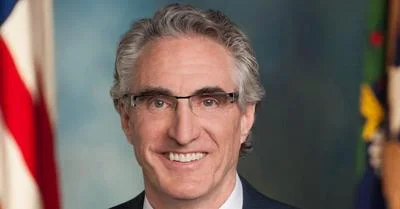The Congressional Record is a unique source of public documentation. It started in 1873, documenting nearly all the major and minor policies being discussed and debated.
“INTRODUCTION OF THE FEDERAL PAYDAY LOAN CONSUMER PROTECTION AMENDMENTS OF 2006” mentioning the Federal Reserve System was published in the Extensions of Remarks section on pages E788 on May 10, 2006.
The publication is reproduced in full below:
INTRODUCTION OF THE FEDERAL PAYDAY LOAN CONSUMER PROTECTION AMENDMENTS
OF 2006
______
HON. TOM UDALL
of new mexico
in the house of representatives
Wednesday, May 10, 2006
Mr. UDALL of New Mexico. Mr. Speaker, I rise today to introduce the Federal Payday Loan Consumer Protection Amendments of 2006. This legislation prohibits federally insured institutions from engaging in high-cost payday loans and expands protections for consumers in connection with making these loans by uninsured entities.
It is well known that payday lending is a rapidly expanding form of high-cost, short-term credit. Studies indicate that the average annual percentage rate on payday loans ranges from 390 to 780 percent for a two-week loan. Let me repeat that: the average annual percentage rate on payday loans ranges from 390 to 780 percent. Additionally, typical payday loan customers take out between eight and twelve loans per year from a single lender.
I believe lending that fails to assess a borrowers ability to repay, that requires consumers to write checks on insufficient funds and that encourages perpetual debt is unacceptable. However, many of the laws pertaining to payday lenders are dealt with at the State level. One area, however, where the Federal Government has an important role to play is with what are known as ``rent-a-banks.'' Rent-a-banks are banks that partner with payday lenders to make single-payment and installment loans. These arrangements are designed to allow payday lenders to evade small loan laws in their respective States.
As such, my bill prohibits insured financial institutions from making payday loans, either directly or indirectly. It prohibits them from making loans to other lenders so that they can, in turn, make, refinance, or extend payday loans. In addition to prohibiting rent-a-
banks, my legislation seeks to ensure that those individuals who choose to take out a loan with a high interest rate know that they are doing so. Consumers should be aware that they are borrowing with an unusually high interest rate. My legislation requires the Federal Reserve System to conduct a study to determine the most effective way to require all credit applications that have an annual percentage rate higher than thirty-six percent to include a high-interest warning label.
Last year, despite my opposition, Congress passed the Bankruptcy Abuse Prevention and Consumer Protection Act, which only addressed the personal responsibility of debtors. While I fully concede that individuals must take greater responsibility for their debt, I also feel that the lending industry should be held accountable for targeting those individuals who are unable to pay off their debts. We must address both irresponsible borrowers and lenders to stop the cycle of debt that has enveloped many Americans.
I urge my colleagues to support this legislation.
____________________








